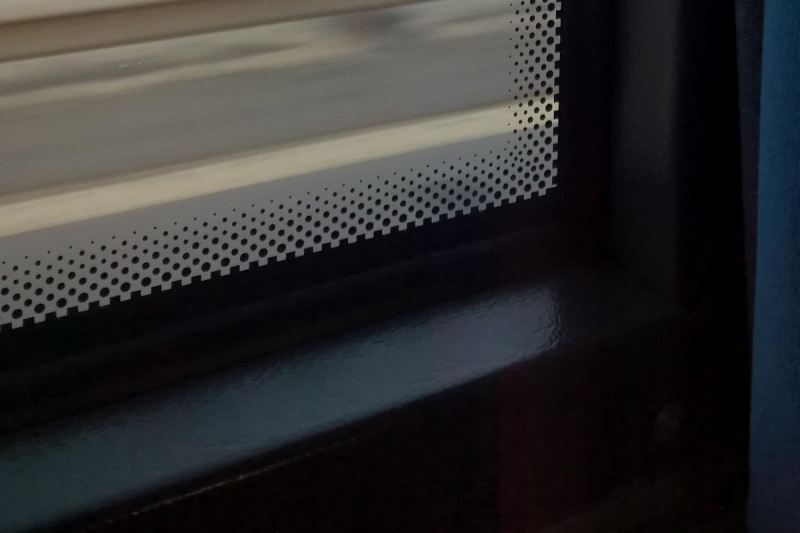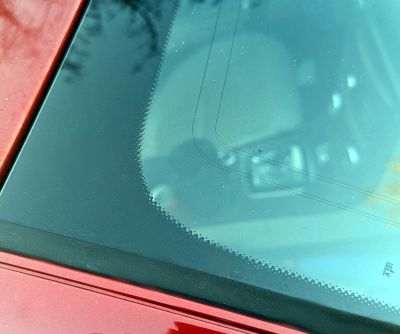
You probably see a frit every day and don’t even notice it. What is it? You know the black band around your car’s windshield? That’s a frit (which, by the way, can also mean ingredients used in making glass) or, sometimes, a frit band. What’s more, it probably fades out using a series of dots like a halftone image, right? Think that’s just for aesthetics? Think again.
Older windshields were not always attached firmly, leading to them popping out in accidents. At some point, though, the industry moved to polyurethane adhesives, which are superior when applied correctly. However, they often degrade from exposure to UV. That’s a problem with a windshield, which usually gets plenty of sunlight.
The answer is the frit, a ceramic-based baked-on enamel applied to both sides of the windshield’s edges, usually using silk screening. The inner part serves as a bonding point for the adhesive. However, the outer part blocks UV radiation from reaching the adhesive. Of course, it also hides the adhesive and any edges or wiring beneath it, too.
But the Dots?

What about the dots? Well, as you might expect, when the black enamel blocks UV, it turns into heat, so you now have, potentially, a hot edge and a cooler center. That’s not a good thing for glass and can cause deformation. At best, it might cause optical distortion. At worst, it might crack the glass. The dots, then, cause an even temperature gradient to form instead of a sharp transition.
This is especially important because of the way windshields are made. They start as ordinary flat glass but are placed in an oven and bent against a jig. There are usually two pieces of glass, one slightly larger than the other. Finally, the two pieces of glass are laminated together with a sheet of polyvinyl butyral — an optically clear, flexible, and sticky material that keeps the glass from shattering.
No Frit?
Some windshields have a tint in them that block UV and don’t need a frit. In addition, there are advanced adhesives that don’t need protection from UV. But for most cars, the frit is a visible reminder that someone puts a lot of thought into every piece of an automobile. Many cars now have frit behind the rearview mirror to help block sunlight in that area.
Older cars didn’t have frit bands because they used a gasket to seal out water and a metal trim plate over the edge of the windshield. That had a bad habit of letting the windshield fly free in certain kinds of accidents, though, so you won’t find that on modern cars.
Glass is one of the oldest engineered materials around. The wipers are the next thing to notice about windshields, but we’ve already talked about those.
Tech in Plain Sight: Windshield Frit
Source: Manila Flash Report
0 Comments